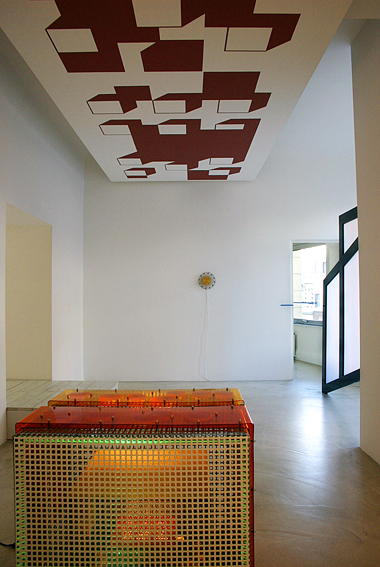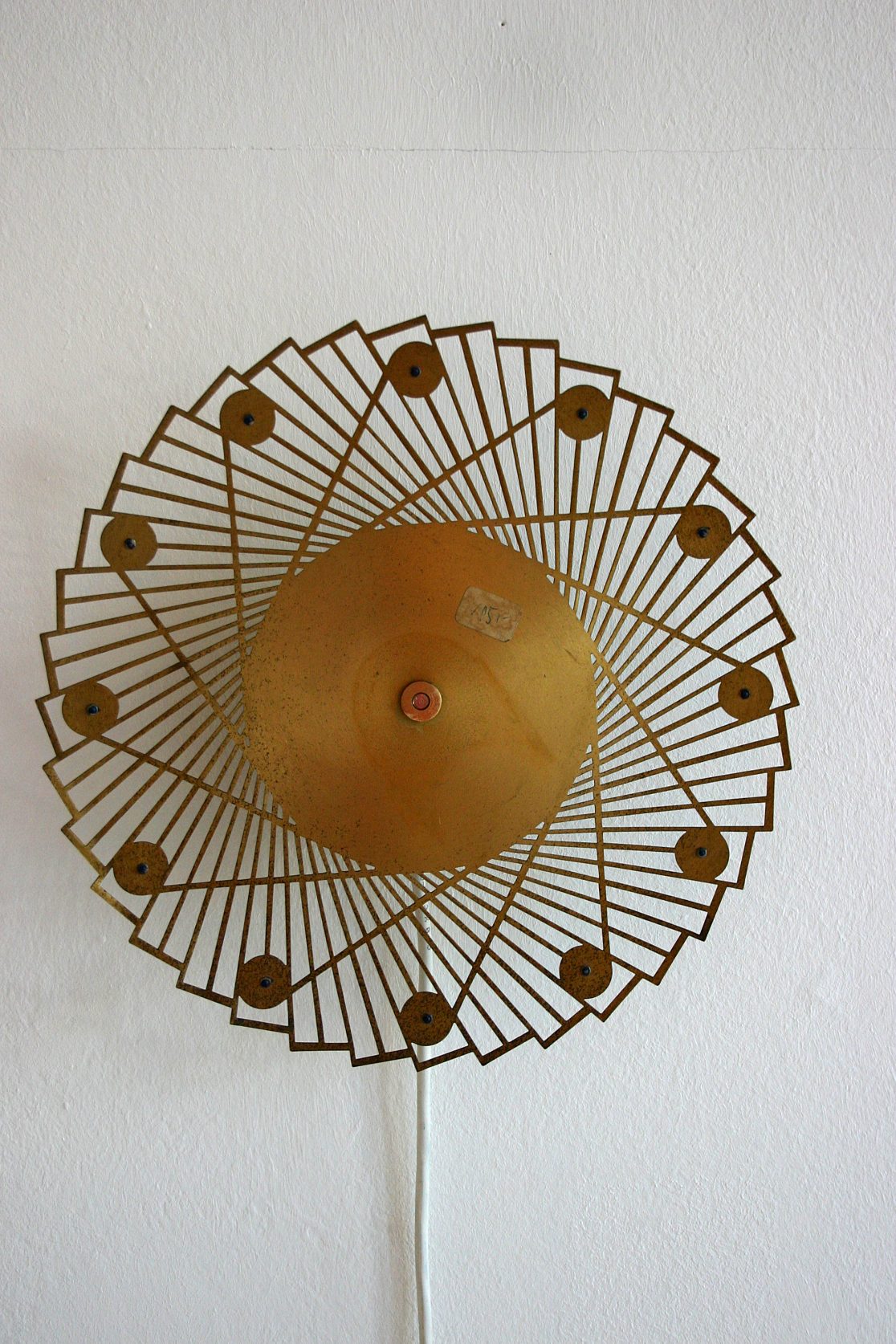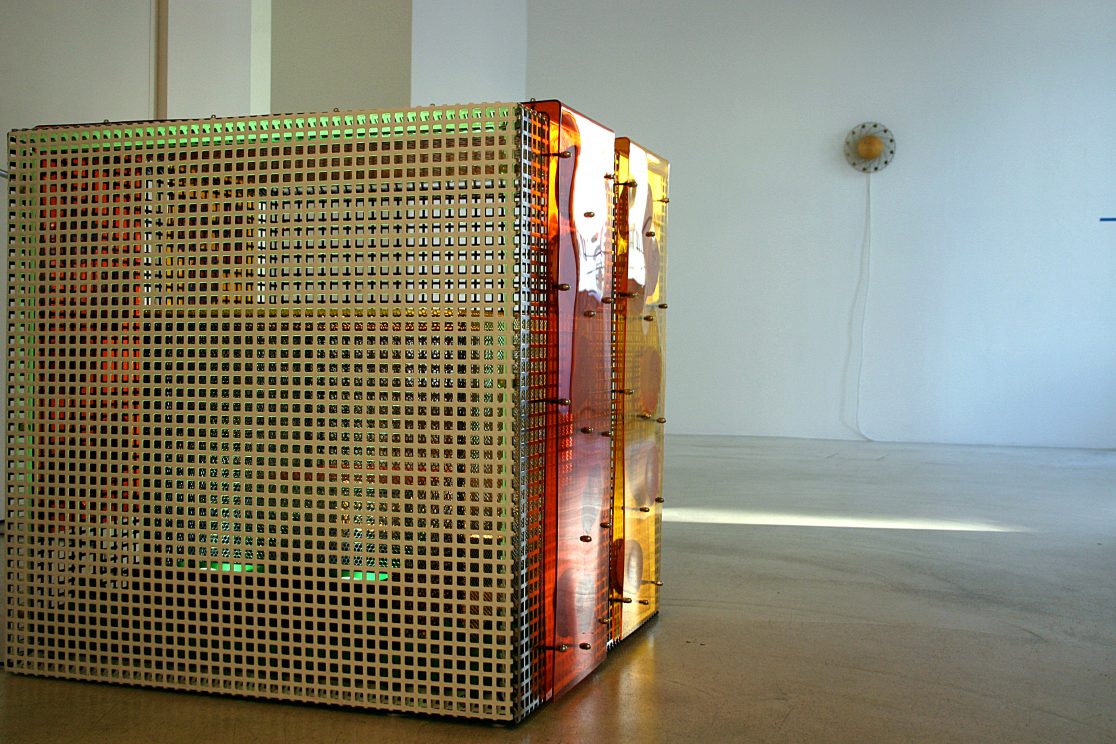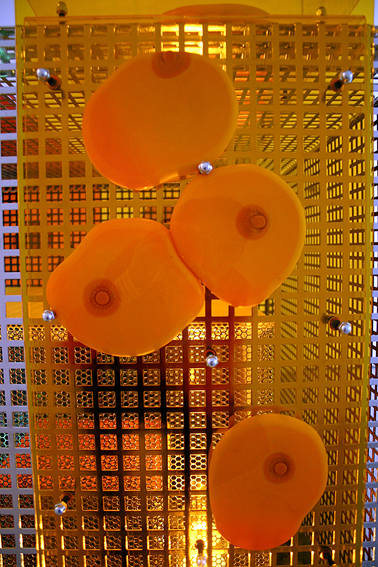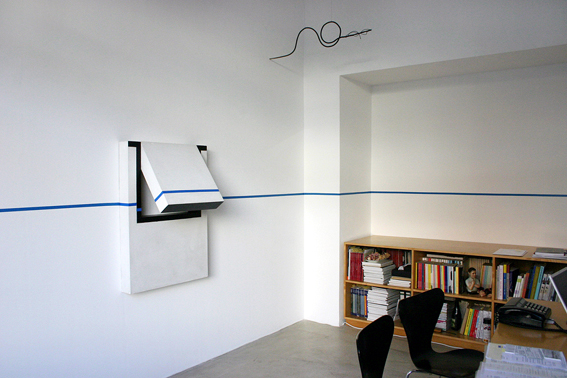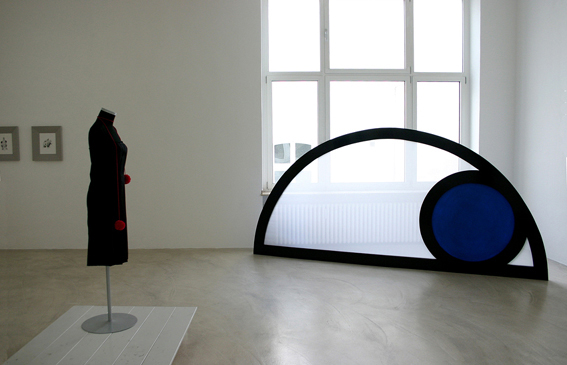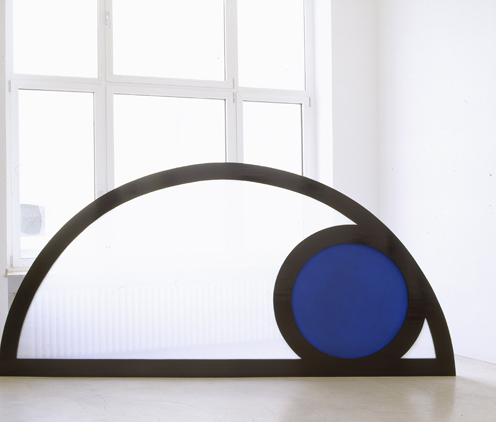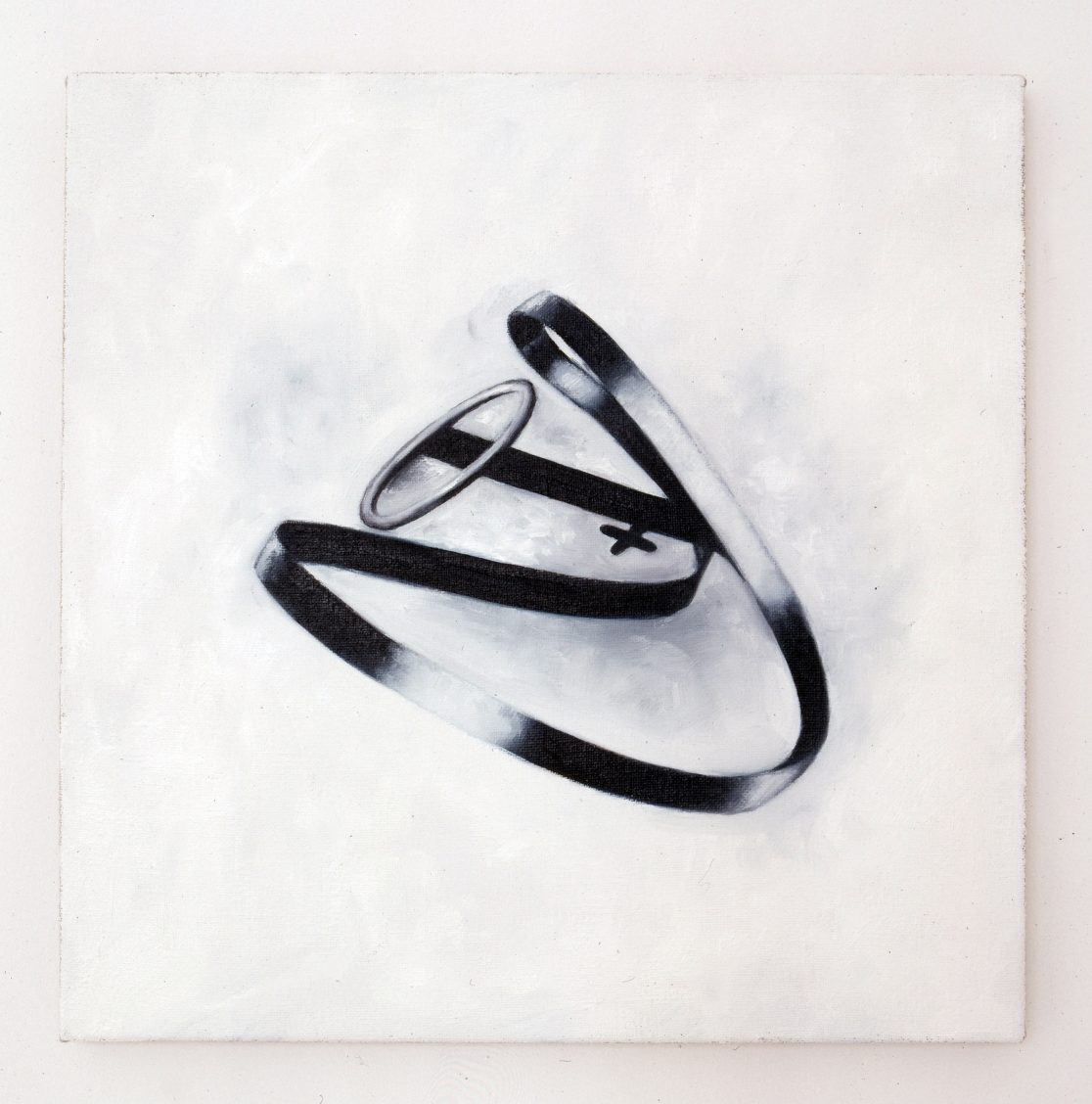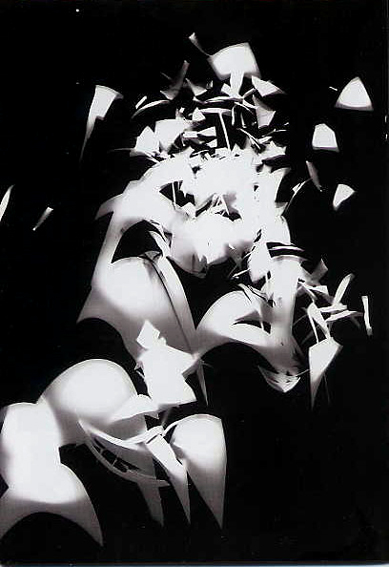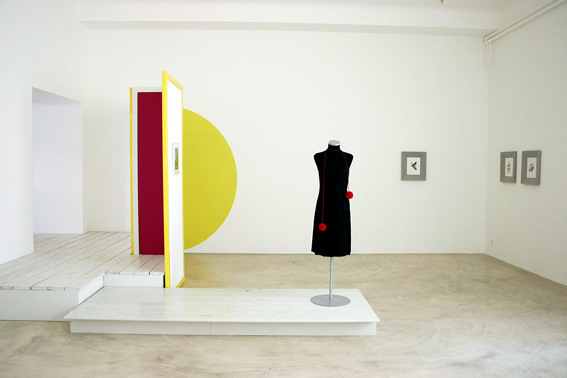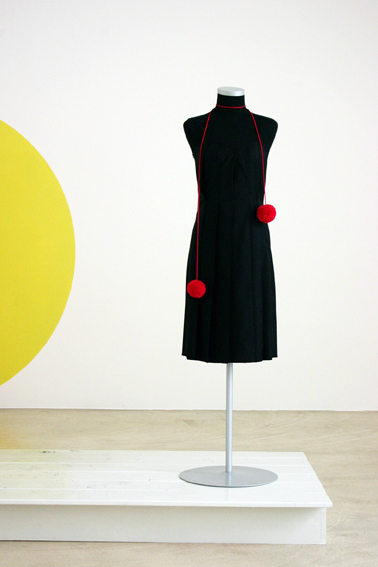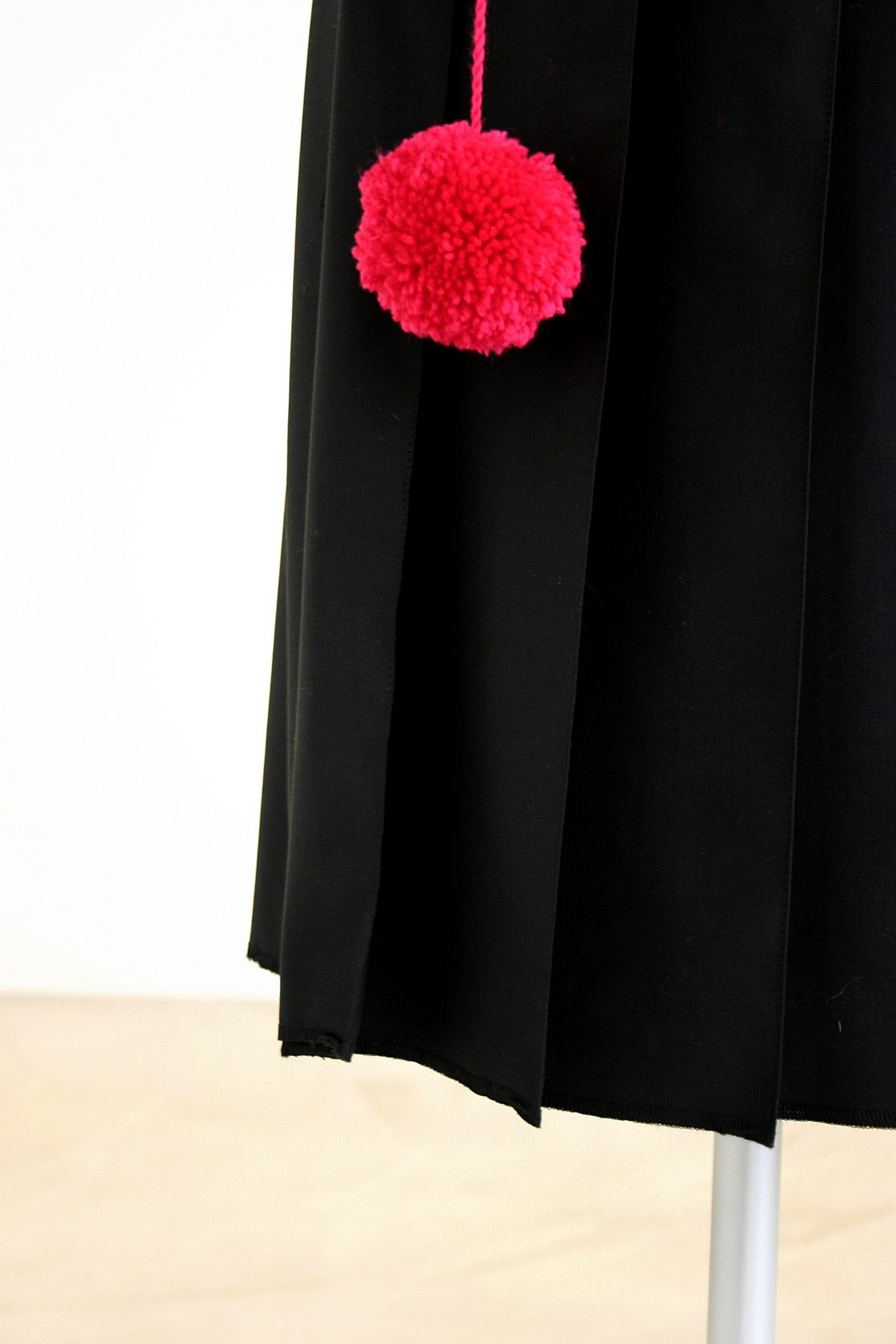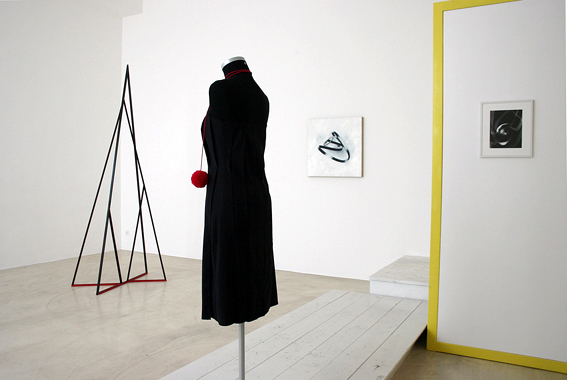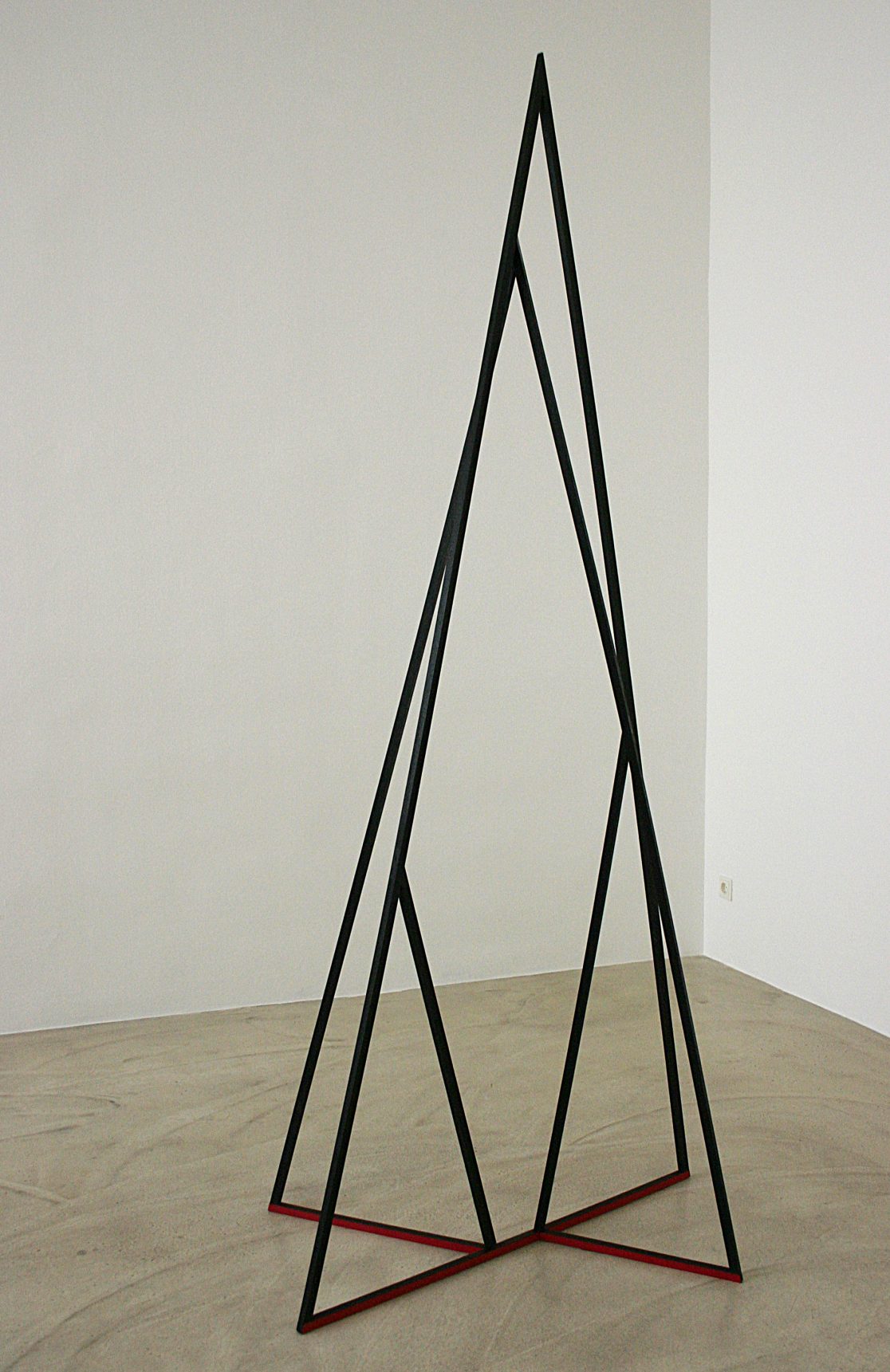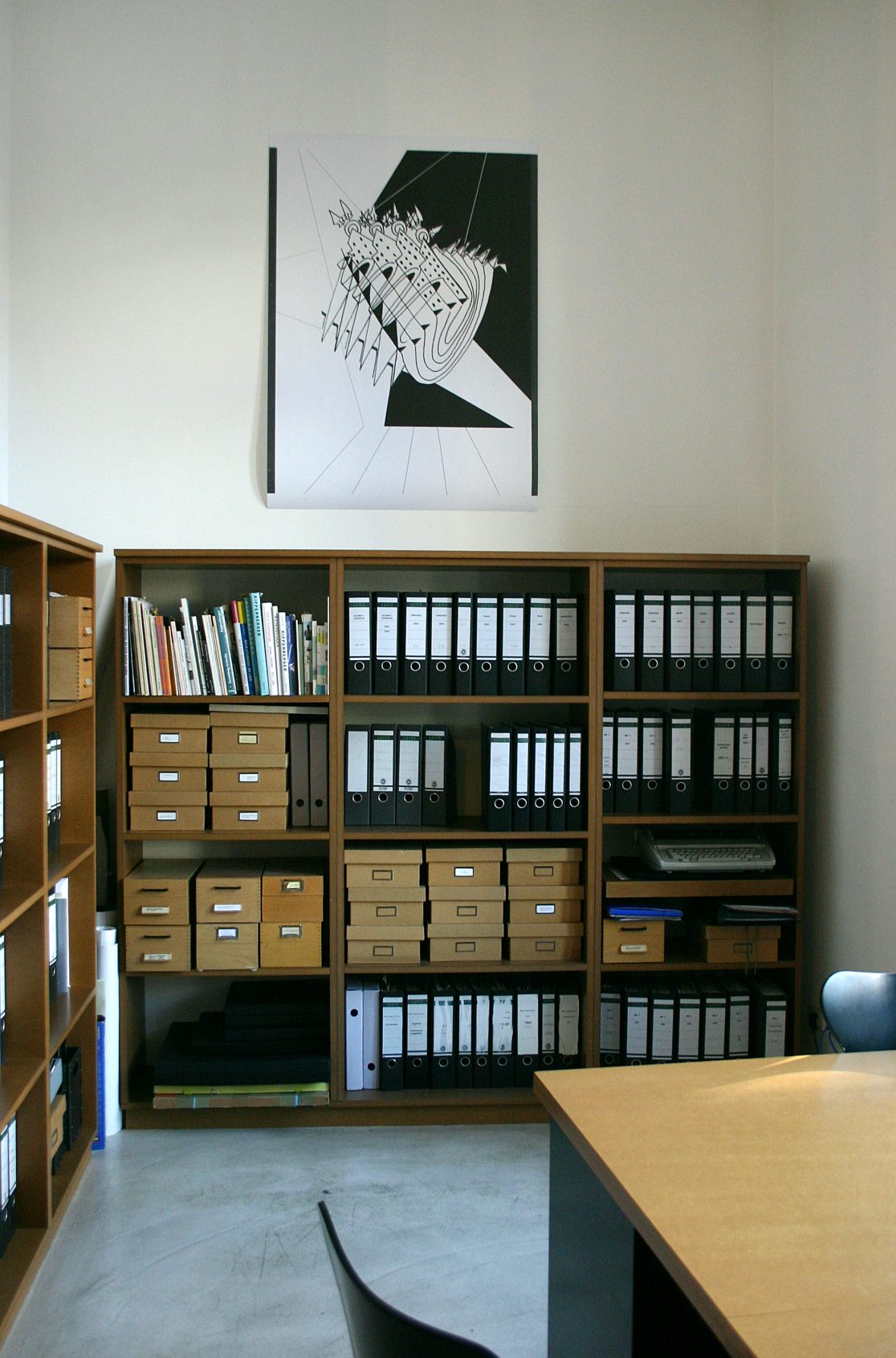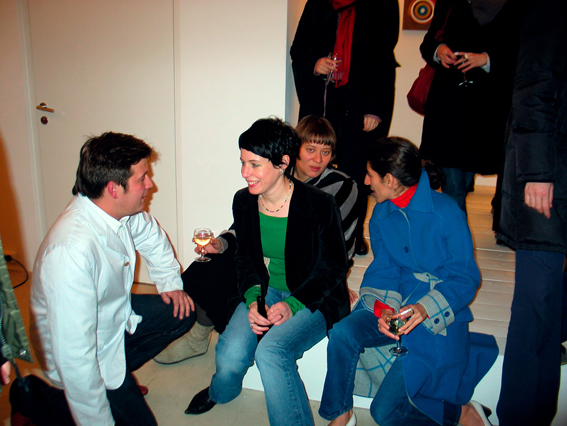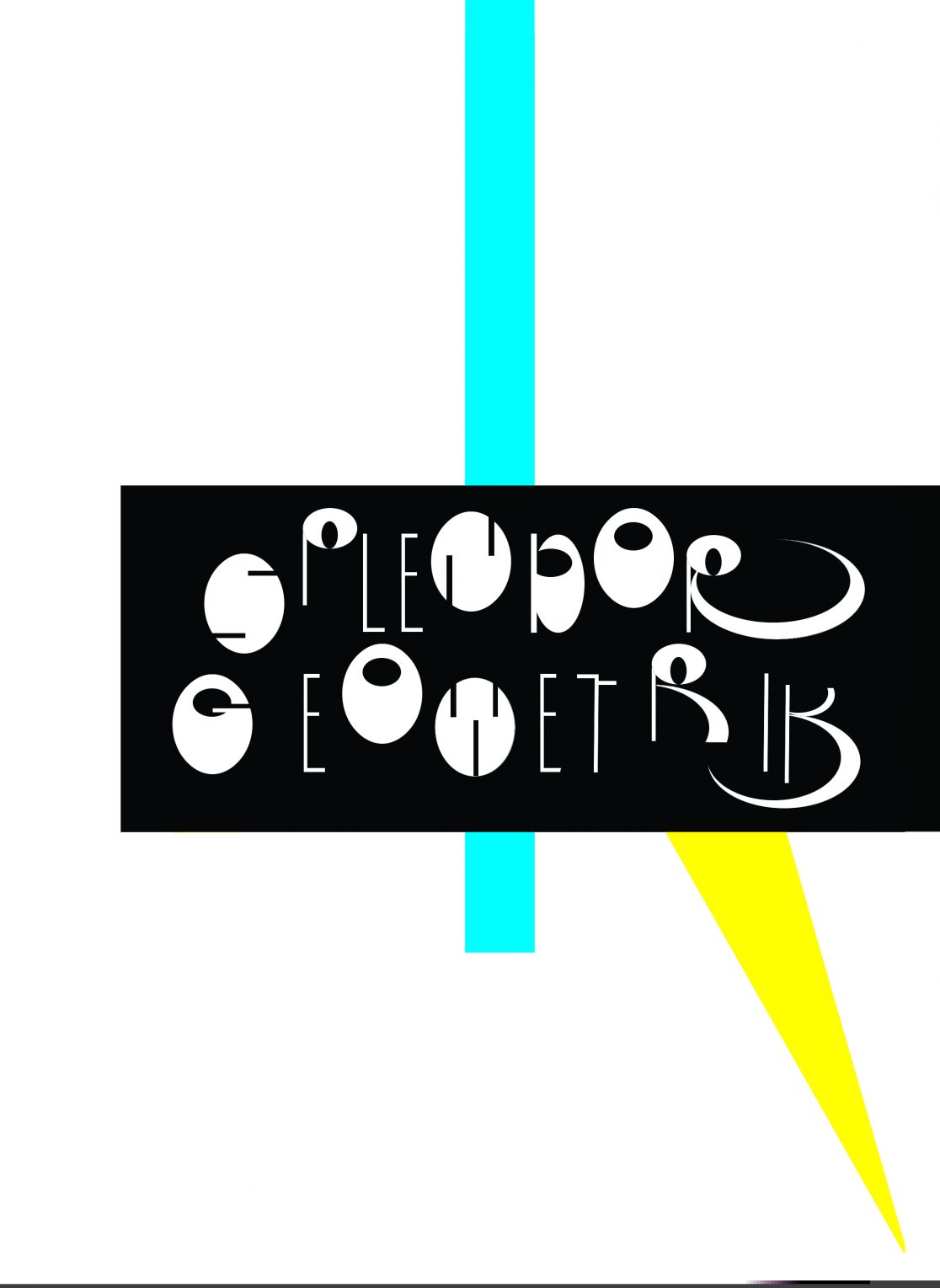Splendor Geometrik, 2004
Curated by Anke Kempkes and Antje Majewski
Galerie Gisela Capitain, Cologne 2003
Nairy Baghramian
Ayzit Bostan
Gillian Carnegie
Margarete Jakschik
Edward Krasinski
Antje Majewski
Eva Rothschild
Anja Schwörer
Monika Sosnowska
Katja Strunz
Gary Webb
“The aim of modern painting and sculpture is a creative experiment, an invention of form, which stimulates a growing range of opportunities provided by everyday life.”
(Katarzyna Kobro/ Wladyslaw Strzeminski)
Splendor Geometrik presents a selection of contemporary art activities that revisit abstraction in new and unexpected ways. Signalling the experimental approach to a traditional group exhibition, each of the exhibited works is connected by a specific “architecture”, a kind of imaginary space designed by Berlin-based artist Antje Majewski that connects the works in special artistic modules.
Rather than serving to unify the pieces, these special elements highlight the far-reaching characters of each of the individual works, which originated in Poland, England, and Germany. Accordingly, the different sculptural and painterly sensibilities of the artworks on show are outlined in particularly intense ways.
A recurring motif in the formal structure of the works in Splendor Geometrik is the purposely-made error that occurs when spatial forms become illusions, when a visual logic of three-dimensionality is shaped out of the two-dimensional or is unexpectedly falling back into it.
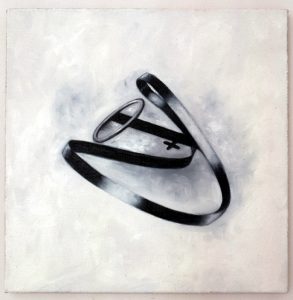
Nach Katarzyna Kobro, suspended construction (2), (1921-22), 2003
Oil on canvas, 70 x 70 cm
The painting After Katarzyna Kobro, Suspended Construction (2), (1921-22) by Antje Majewski ‘depicts’ a sculpture by Polish constructivist Katarzyna Kobro. Like many of Kobro’s works, the fate of the original artwork from the classical modernist period are unknown, as it was likely to have been destroyed or lost over the years. What remains is a rough drawing of the piece and a photographic reproduction, but the exact dimensions are unknown. Yet the strangely contemporary-looking sculpture— this free-hanging piece that we casually referred to as “diadem”— became a crucial point of departure for this project.
In Kobro’s Suspended Construction (2), a miraculous and unsolvable twist is at work where modernist reduction and rhythm is linked to symbolic signs such as the cross and the circle, infusing the object with an infinite potential for associated meaning. The sculpture stands in for a process which, despite the strict anti-illusionist theory of “Unism” developed by the artist couple Kobro/Strzeminski, was always involved in contradictions over the fulfilments of their own modernist rigidity.
The fact that Majewski’s painting gives Kobro’s object from the early 20s an aura (which the avant-garde artist drastically resisted in her works) turns the image into an icon of historical tension, re-enacting the “border crossings” between figuration and abstraction, functionalism and illusionism.

Installation view: Edward Krasinski
As a central representative of the Polish neo-avant-garde in the 1960s and 70s , the works by conceptual artist Edward Krasinski, also presented in Splendor Geometrik, developed quite naturally out of the artistic attitudes of Polish Modernism. Even his “interventions” and the consistently recurring blue line in the room “stimulate the increase in opportunities that mobilize daily life”.
Krasinski, who had been closely associated with the story of the Galeria Foksal in Warsaw, started to experiment on his characteristic Interventions in the 60s. These white plywood boxes were positioned in more or less specific everyday spaces. They are related to the walls and dimensions of a place by a blue line, which lead over the hanging sculpture and further along the walls at a height of 130 cm. This blue line, which from then on became a trademark of Krasinski’s body of work like the blue stripes of his artist friend Daniel Buren, notoriously marks the circumstances and conditions of the social spaces his works appear in.
“I would stick it up in all sorts of weird places. If the stripe is supposed to be everywhere, then let it be everywhere, not just in the Museum Ssztuki in Lodz or Galeria Foksal. It might turn up in a butcher’s shop around the corner…. the stripe is independent from everything and everybody, from Communism and Solidarity, you name it. It just trickles in spite of all.”
(Edward Krasinski, 1997)
Although Krasinski’s Interventions are very specific in the way they produce spatial illusions, their presence is at the same time elegantly casual. Often Krasinski executed a graphical design in black color on the white surfaces of the flat boxes, playing with irritating spatial effects. In other works like the two Interventions from 1981 and 1990 presented here, Krasinski produced cutouts in the wooden construction sticking out into space, giving the objects itself a playful but also conceptual three-dimensionality. These Interventions are as much self-contained delicate and discrete objects as they are marking the space in a special way, artistically “stimulating a blowing range of opportunities provided by everyday life” situations.

Installation view: Monika Sosnowska (floor), Edward Krasinski (wall)
The ceiling painting executed in situ by Monika Sosnowska shows a geometrical pattern inspired by public decors in Poland. Those decors often appear –side-by-side with propagandistic art works as arbitrary adaptations of a modernist form vocabulary.
Traces of the real public sources are still vivid in Sosnowska’s use of local and time-bound colors and e.g. in the choice of the architectonic support of the painting.
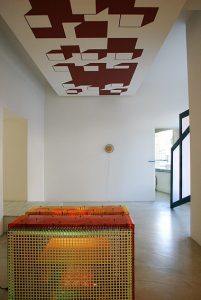
Installation view: Gary Webb (floor), Monika Sosnowska (ceiling),
Katja Strunz (central wall), Antje Majewski (screen)
Quite different traditions and associations influence the works by Eva Rothschild and Gary Webb. With his manneristically produced sculptures, Gary Webb is playing with a whole range of historical moments of design and with sculptural stories, which meet in his works in radically unfamiliar ways.
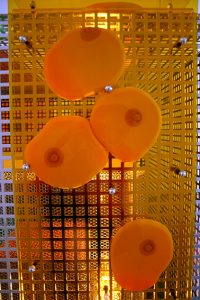
Gary Webb, Detail
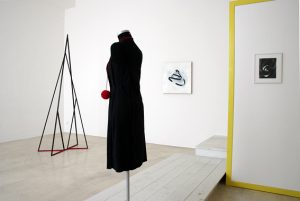
Installation view, from left to right: Eva Rothschild, Ayzit Bostan, Antje Majewski, Anja Schwörer
The almost always black sculptures of Eva Rothschild are gorged with meanings that reach beyond their own formal language and are at the same time strangely correspondent with the geometrical shapes of her mostly floor based pieces. Similar to what is enacted in the work of Katja Strunz, likewise her kinetically slow moving wall-sculpture in the show, one gets the feeling that formalism here is verging on other worlds and narratives outside of its historically witnessed self-containment.
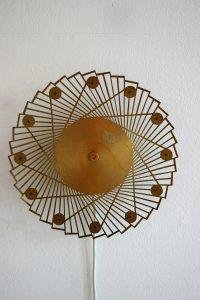
Katja Strunz
Anja Schwörer’s photograms seem comparably untouched by the historicity of this highly overworked genre of classical modernism, though she uses the technique with a strictness that suits its historical charge.
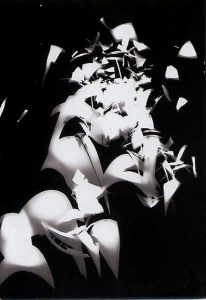
Anja Schwörer, Photogramm, 2003
Her photograms are not purely formalistic experiments. Far more they take grounds by their own enigmatic depth.
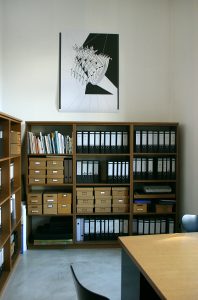
Nairy Baghramian
Nairy Baghramian’s ink-drawings and posters are like the ruins of thoughts, transforming hopeful as well as dark streams of consciousness of historical revolutionary aesthetic und utopian ideas in art into an individual, graphic vision. Suspended in timeless space, she suspends her motifs in dreamlike sequences that make agitation seemimmanent and desirable.
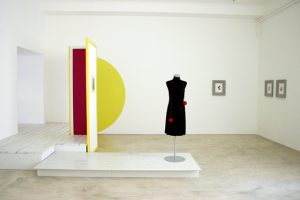
Installation view, from left to right: Antje Majewski (screen, wall painting), Ayzit Bostan, Nairy Baghramian
The fashion designer Ayzit Bostan has created a dress for the show called ABC. Its subtle design reflects on avant-garde repertoires, radically meeting the conditions and standards of today.
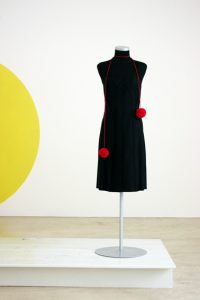
ABC, 2003
Dress by Ayzit Bostan
Finally, Cologne-based artist Margarete Jakschik contributed a photograph showing a beach scene — a “Kite Festival” on the coast of Netherlands —which is full of discrete genre motifs. It is the only work in the show with a foundation in the realistic style. But at the same time, Jakschik’s delicate compositional choices in the picture open and widen the general ways of thinking about abstraction.
Text by Anke Kempkes
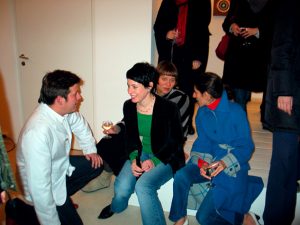
Gary Webb, Eva Rothschild, Antje Majewski, Nairy Baghramian at the opening
Thank you:
All of the artists, Gisela Capitain, Joanna Mytkowska / Foksal Gallery Foundation, Ingo Keller, Jan Dunkel.
